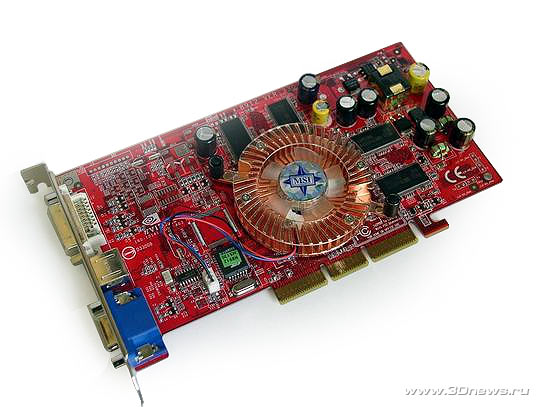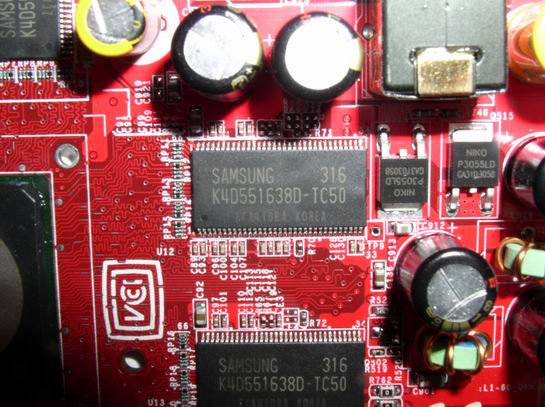nVidia GeForce FX5600 (NV31) Video Card Roundup

By:
Is nVidia retreating?
NVidia's eminent success in 3D graphics is unquestionable, in support of which there's the great number of manufacturers producing video cards based on the popular video chips. The last year was notable for not only the essential growth in the number of partners, but for a serious breakthrough at performance for the mainstream video cards. Recall that the mainstream version of the GeForce 4Ti chip dubbed as 4200 gained its popularity due to the superb 'price/performance' ratio. With the advent of new GeForce FX graphic processors, things have somehow changed albeit far not to the better. While GeForce 4 video cards were taking a serious lead over the predecessors (what is meant is the support for new visualization technologies) at quality and performance, FX products seem to be aimed at merely switching the 3D industry towards DirectX9. At least, while presenting the new line of graphic cards Alan Tike claimed that the company would cease the FPS races and put image quality on the top of the list to maximize the realistic visual experience. With the marketing component skipped off this statement, that means the new products hardly take a lead over the old product lines at performance. This applies primarily to the top-end video cards! But what about the mainstream sector? Let's better not run ahead and rather roundup the FX5600Ultra chip by the example of the MSI FX5600 (MS-8912) video card that is positioned on the mainstream sector, that is meant to come as a replacement to the 4200 and 4400 models.
Let's recall the main specifications of the NV31 graphics used in the video card in question:
|
nVidia GeForce FX5600 |
| Process technology, nm |
130 |
| Q-ty of transistors, mln |
75 |
| Pixel pipelines |
2/4(1) |
| Texture units |
4 |
| Core speed, MHz |
325/350 (Ultra) |
| Memory bus, bit |
128 (DDR) |
| Memory bus speed, (eff.) MHz |
550/700 (Ultra) |
| Pixel shaders |
2.0+ |
| Vertex shaders |
2.0+ |
| Memory bandwidth, GB/s |
11,2 |
| HSR |
Yes |
| Early Z-test |
Yes |
| Z compression |
Yes |
| Color compression in MSAA modes |
up to 1:4 |
| Hardware geometric unit |
yes (4) |
| RAMDAC, Mhz |
2х400 |
| TV-Out |
External ? |
| DVI |
Integrated |
| Case |
BGA (6) |
Here are the official specifications for the MS-8912 video card:
| The chip: |
GeForce FX5600 |
| RAM capacity |
256 Mb |
| The graphics core clock speeds: |
325 MHz |
| Memory clock speeds: |
550MHz |
| Memory bandwidth: |
11.2 GB/s |
| Output speeds: |
1.4 trln texels/s. |
| Vertices per second: |
88 mln |
As you see, the clock speeds of the processor and memory are somehow lower than those declared in nVidia's specifications for Ultra models which are to be equipped with 256 MB RAM available in the MS-8912 model. In the end, Microstar made a pretty weird hybrid. Besides, of note is the fact that MSI's FX5600 Ultra video cards have not yet been announced and it looks like we are dealing with an attempt to merge great capacity of slow memory with a slow chip. Anyway, let's leave the reasoning out and go on with the roundup.
MSI's value kit
A persistent rival of Asustek in the sphere of motherboards and video cards, Microstar has been traditionally notable for expensive products put in pricey package bundles. Usually, the package bundle has a lot of needed and useless software suites, a heap of laces and adapters as well as a pudgy volume of the operating manual giving information on the whole range of current video card lines. In fact, this video card didn't prove to be an exception, and in the rainbow-tinted multicolored box we found all the necessary items, namely:
- a DVI-DSub adapter;
- an SVideo – RCA adapter;
- games: Morrowind, Duke Nukem MP, Ghost Recon;
- a collection of 7 demo games;
- drivers & software: WinDVD, MSI 3D Desktop, Virtual Drive, MSI Media Centre;
- a mega operating manual.
This is to draw the readers' attention that despite many years of operation in Russia, MSI's products have not been often equipped with instruction manuals written in Russian. Mind you, most of the advanced users don't need that care at all, but nevertheless some patriots might take this fact in a not really adequate way. It's about all with describing the package bundle, so let's move on to examining the exterior.
The board layout
This video card is made following MSI's traditional red PCB and in full accord with NVidia's reference design.

MSI FX5600 (MS-8912)
Under the standard propeller with a copper radiator, a "non ultra" GeForce FX 5600 graphics chip was found.
The cooling system also didn't make any difference from the reference, so we are not describing it in detail, but the memory chips merit a closer look. Take a look at the photo!

The TC-50 index means that the access time is 5 ns, which is equivalent to 400 MHz. However, the specs for this card says 550 MHz, therefore the memory in MS-8912 runs at increased speed (for the chip), which hardly favors to additional overclocking. Forgive me the readers, but being strongly against any "unnatural manipulations" towards computer components, I will not write a line on that. Overclocking potentials differ essentially even among video cards of the same lot, which may result in angry claims like "I read, trusted and bought it, threw off my money, but the damn rig won't overclock..!" Besides, the "amateur" overclocking spoils hardware, which the author has made sure many times on his own experience. Overclocking the Albatron Geforce 4 TI 4200 video card resulted in a damage to the fan so that the plastic cracked due to overheating. Let's go on reviewing the MS-8912 in the nominal mode.
 |
Content: |
 |
|
 |
Top Stories: |
 |
 |
 |
MoBo:


|
 |
 |
 |
VGA Card:


|
 |
 |
 |
CPU & Memory:

|
|
|
